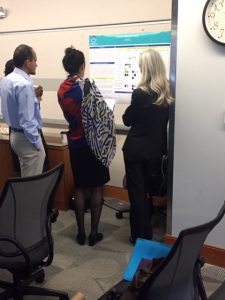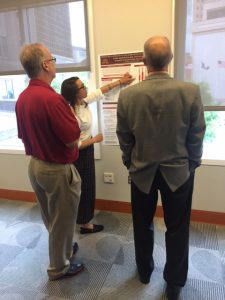All posts by msadmin
News
NEW STUDY: Design Strategies for Maximizing Stormwater Capacity of Urban Tree Pits
Sustainable Healthy City researchers Patricia Culligan and Robert Elliott of Columbia University have co-authored a new study looking at design and management strategies to maximize the stormwater management capacity of tree pits. See coverage of the study as published by Columbia News below. Read the full study in the journal Ecological Engineering.

So Much Depends on a Tree Guard
News
COMMENTARY: Six Principles for Energy Innovation
Sustainable Healthy Cities researcher Gabe Chan has co-authored a commentary piece about key principles of energy innovation in the journal Nature. An excerpt of the commentary as published by the Humphrey School of Public Affairs is below. Read the full commentary from Nature.

December 6, 2017—
Last month, the European Union marked the tenth year of its Strategic Energy Technology Plan. It is one of many policy initiatives worldwide to accelerate innovation in energy technologies to reduce greenhouse gas emissions. As the window of opportunity to avert dangerous climate change closes, we urgently need to take stock of these initiatives—what works and why?
Public investments in energy research, development, and demonstration (RD&D) have risen since the low levels of the mid-1990s and early 2000s. In 2016, member countries of the Organisation for Economic Co-operation and Development spent US$16.6 billion on energy RD&D, compared with $10 billion in 2000 (adjusted for purchasing power parity). In October, the United Kingdom set out its Clean Growth Strategy to invest more than £2.5 billion ($3.3 billion) in low-carbon innovation between 2015 and 2021. In 2015, the EU and 22 nations pledged to double their investment in energy RD&D under the Mission Innovation adjunct to the Paris climate agreement. However, the overall goal might be out of reach given the proposed 35% cut in President Donald Trump’s 2018 budget for energy RD&D.
Different nations are pursuing various strategies and creating new types of institution. For example, the Advanced Research Projects Agency-Energy (ARPA-E) run by the US Department of Energy (DOE) targets grants at key technologies such as affordable energy storage. The DOE Energy Innovation Hubs form research teams to work on technologies such as nuclear reactor modelling.
The United Kingdom has set up the Energy Technologies Institute (ETI), a public–private partnership to accelerate the development of low-carbon technologies. It also launched the Catapult programme, which aims to build bridges between universities and industry, and sustainability advisory services that are run by bodies such as the Carbon Trust. And China is reforming the Chinese Academy of Sciences and its national labs, as well as creating larger lab facilities.
At the international level, the United Nations Framework Convention on Climate Change (UNFCCC) Technology Mechanism enables technology development and transfer in developing countries to support the Paris agreement. Since 2013, the World Bank Group has opened seven climate-innovation centres in developing countries such as Kenya. The centres provide seed financing, policy guidance, networking and technical training. The Nairobi centre, for example, advises startups such as Futurepump, which is developing solar-powered water pumps.
Most of these bodies can claim successes. But a comprehensive global assessment of energy innovation programs is needed to learn from collective experience and to establish best practices. As a starting point, we recommend six principles to guide public initiatives for energy innovation.
Gabe Chan is an assistant professor at the University of Minnesota’s Humphrey School of Public Affairs. He is an affiliated faculty researcher with the Sustainable Healthy Cities Network.
News
NEW STUDY: Cities Can Play Important Role in Reducing Environmental Impact of Food Systems
A new study published by SRN researchers in the the journal Environmental Science & Technology introduces a methodology for understanding the impact that city-level policy can have on reducing the overall environmental impact of food systems. See complete findings here.
On global and national scales, the food system is known to have substantial environmental impact, with estimates as high as 85% of global water use and 30% of global greenhouse gas emissions. Yet cities, despite being such large centers of population and food use, remained largely absent from the discussion of how to mitigate these large environmental impacts. The food system has traditionally not been considered a common concern of municipalities, particularly in comparison to other infrastructure sectors, thus the metrics and tools to assess city-level change within the food system are substantially lacking.
Only recently have cities begun reemerging as players in the global food system grappling with food system concerns ranging from health and nutrition of their residents, equity of access, resilience, and environmental sustainability. Evidence of this is seen in recent efforts by global food organizations, including the United Nations Food and Agriculture Organization’s Food for the Cities, C40’s Food Systems Network and the Milan Food Pact, all working to mobilize city-scale food system actions. Examples from the Minneapolis-St. Paul Metropolitan area include the Minneapolis Food Policy Council, Homegrown Minneapolis, a non-profit organization, as well as the City of St Paul through its work to improve food access.
Yet with such a diversity of urban food concerns, the science is lacking to assess the tradeoffs and co-benefits of various city-level actions that affect food policy and food systems. For example, if a city aims to promote a particular diet for improved health, does this complement or conflict with efforts to lessen overall environmental impact?
While the water, energy/greenhouse gas (GHG) and land impact of the global food system has been studied on national and global scales, this paper focuses on actions taken at the city scale that have received little attention. The paper presents a systems methodology to address the important question of: what is the extent to which city-scale actions shape the overall food system’s environmental impact, specifically in terms of GHG, water, and land?
The methodology helps to identify which food systems strategies are co-beneficial and where tradeoffs must be considered in terms of water, energy, GHG and other social impacts (i.e. greater equity, increasing nutrition). The methodology presented is applicable to any city with the requisite data. As cities increasingly emerge as prominent players in the global food system, this research helps cities to understand, quantitatively, their actions in the context of resource constraints and planetary boundaries.
Applied to Delhi India, the work explores future urban food scenarios related to: a) diet-related equity and health; b) sustainable diet change; c) greater local food production through various modes of urban agriculture (soil-based, vertical); d) improved food waste management and e) cooking fuel interventions.
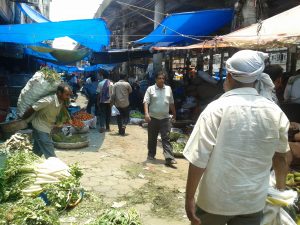
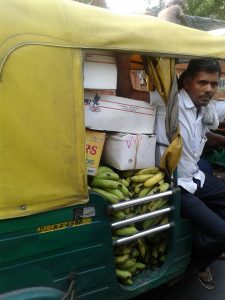
The analysis demonstrates that city-scale action can rival typical food policy interventions that occur at larger scales, although no single city-scale action can rival in all three environmental impacts. In particular, improved food-waste management within the city (7% system-wide GHG reduction) matches the GHG impact of pre-consumer trans-boundary food waste reduction. The systems approach is particularly useful in illustrating key tradeoffs and co-benefits. For instance, multiple diet shifts that can reduce GHG emissions have trade-offs that increase water and land impacts. Vertical farming technology with current applications for fruits and vegetables can provide modest system-wide water (4%) and land reductions (3%), although implementation within the city itself may raise questions of constraints in water-stressed cities, with such a shift in Delhi increasing community-wide direct water use by 16%. Improving the nutrition status for the bottom 50% of the population to the median diet is accompanied by proportionally smaller increases of water, GHG, and land impacts (4%, 9%, and 8%, system-wide): increases that can be offset through simultaneous city-scale actions, e.g., improved food-waste management and vertical farming technologies.
The study, “What Is the Contribution of City-Scale Actions to the Overall Food System’s Environmental Impacts?: Assessing Water, Greenhouse Gas, and Land Impacts of Future Urban Food Scenarios” is published in the journal Environmental Science and Technology by Dana Boyer (PhD Candidate, Science, Technology and Environmental Policy) and Anu Ramaswami (Professor, Denny Chair) of the Center for Science, Technology and Environmental Policy at the Humphrey School of Public Affairs. See the complete findings here.
News
NEW STUDY: Role of Cross-Sector Strategies in City Efforts to Reduce GHG Emissions, Improve Health
Based on “bottom-up” emissions data from 637 cities in China–the most comprehensive data set of its kind–a new study published in the journal Nature Climate Change by SRN researchers models the role of cross-sector strategies in city efforts to reduce GHG emissions.
The study specifically considers the aggregate GHG emissions impacts and local health impacts that could be generated if cities deployed strategies of cross-sector industrial symbiosis to capture and re-use “waste heat” and other other byproducts of industrial activity located in or near cities. The study has key implications for:
- 1) quantifying what cities can and cannot do to contribute to national aggregate CO2 mitigation efforts
- 2) quantifying what city-level CO2 mitigation efforts mean for local health benefits
- 3) understanding the potential impact of circular economy policies and urban design strategies that encourage cross-sector reuse of “waste heat” and other industrial byproducts
The remainder of this post is excerpted from an article posted on the Humphrey School of Public Affairs news page. See the original article here.
Concerns over global climate change and local air pollution have led many cities around the world to get creative in their efforts to reduce the use of fossil fuels. They’re going beyond conventional single-sector strategies such as energy-efficient buildings and power plants to look at innovative ways to capture waste heat from industries and businesses—from cement plants, to pulp and paper mills to grocery stores—and pipe it to homes and buildings up to 30 kilometers away.
Some cities are also reusing waste materials from industries in urban construction as a substitute for cement and other construction materials, helping reduce the demand for these materials.
Scientists use the terms “cross-sector strategies” and “circular economy strategies” to describe such novel approaches to urban infrastructure planning, which have several goals: to reduce material and energy use; to reduce reliance on fossil fuels; to improve air quality; and to improve the health of residents in urban areas, while simultaneously creating value from resources that were previously wasted.
New research by Professor Anu Ramaswami of the Humphrey School of Public Affairs at the University of Minnesota, published Monday in the latest online edition of Nature Climate Change, is the first to demonstrate just how successful these strategies would be, if widely adopted.
“Cities are the critical centers of change when it comes to taking action on greenhouse gases,” said Ramaswami, who led this study that looked at all 637 cities in China at the same time. “Our research shows there’s great potential for cities to reduce energy demand and carbon emissions by adopting cross-sector strategies, such as reusing industrial byproducts like waste energy, on a mass scale. And that means a better quality of life for residents. It’s a win-win.”
Professor Anu RamaswamiThe study finds that if all cities in China adopt these strategies, they would reduce greenhouse gas emissions by up to 36 percent—and at the same time, protect up to 57,000 people from dying prematurely due to poor air quality. Researchers base these findings on models that examine potential carbon reductions and the expected health improvements.
The study also found that the benefits varied from city to city, depending on the locale.
For example, two cities can take similar actions and reduce emissions or energy use by the same proportion, and see very different health and environmental outcomes, due to differences in how air pollution flows into and out of their cities from the surrounding areas.
Ramaswami noted that most research on greenhouse gas emissions up to this point has focused on what national-level policies can do, typically impacting individual sectors of the economy such as power generation, transportation, or energy-efficient building construction. This is the first of its kind to measure the impact of holistic urban planning in cities that encourages compact city development, eco-industrial parks, waste-to-value projects and district energy systems. Cities can readily adopt these practices, Ramaswami said, but they rarely get credit for them in terms of reducing greenhouse gases.
Since her study is the first to collect information at the city level, it’s a starting point for analyzing the science behind what cities can and cannot do to help reduce greenhouse gases on a nationwide basis, and what those steps mean for the local communities.
“The insights we gained from this study will inform how we design sustainable urban areas in China and elsewhere around the world in the future,” said Ramaswami. “That’s important because we expect to see another 2.5 billion people living in cities by 2050, with most of that population growth in Asia and Africa.”
Read the complete findings.
The study was conducted in collaboration with researchers at the Georgia Institute of Technology, Yale University, Tsinghua University, and Shanghai University.
The collaborations were enabled by a Partnership for International Research and Education (PIRE) grant from the National Science Foundation (NSF). The PIRE project concentrates on reducing greenhouse gas emissions from cities, while addressing broader sustainability goals such as economic development, water scarcity, environmental pollution, and public health. Several of the study authors are current affiliates with the Sustainable Healthy Cities Network, supported by an NSF sustainability research network grant.
Ramaswami is the Charles M. Denny, Jr., Chair of Science, Technology, and Environmental Policy (STEP) at the Humphrey School of Public Affairs. The STEP program integrates science with public policy, community action, and multi-sector governance.
News
100+ Attend Sustainable Healthy Cities Workshop on Distributed Infrastructure Futures
On August 28th and 29th, the Sustainable Healthy Cities Network hosted 100+ workshop participants at the Humphrey School of Public Affairs at the University of Minnesota including researchers, graduate students, city/regional government representatives, policy organizations, and industry representatives to discuss distributed infrastructure systems and their role in delivering sustainability outcomes in cities.
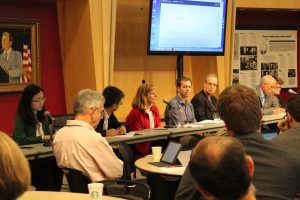
Participants engaged with research findings spanning multiple urban infrastructure sectors—including green infrastructure, urban food systems, transportation, energy, and water/wastewater. Workshop discussions centered on considering the policy and practice relevance of key findings from network researchers to inform urban sustainability decision-making.
The conversation covered topics including : 1) the appropriate scale and jurisdiction for considering the in-boundary and trans-boundary environmental impacts of cities, 2) the optimal mix of new localized and existing centralized infrastructure systems to maximize resource efficiency and sustainability outcomes, and 3) the challenges of financing and encouraging the adoption of distributed infrastructure technologies.
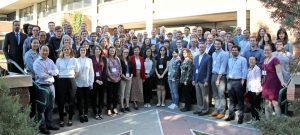
City representatives from Atlanta, Austin, Denver, Detroit, Durham, Fort Collins, Minneapolis, New York City, Saint Paul, Tallahassee, and Visakhapatnam (India) participated in the two day workshop, as did representatives from national organizations including ICLEI, ICMA, and Star Communities. The workshop also benefited from the participation of industry partners from Ecolab and Xcel Energy.
Stay tuned for the release a workshop outcome document later this fall summarizing workshop discussions and highlighting current trends in science-policy interface on issues of distributed infrastructure for urban sustainability. The document is slated for released in November 2017.
News
Study of Wastewater Treatment and Reuse in Urban Ag Receives Press in India

The Indian Express newspaper (link below) reports on a study in Hyderabad, India that identifies the linkages between urban agricultural practices, sewage treatment and reuse, carbon emissions and health. Network member Anu Ramaswami (University of Minnesota), Leslie MiIler-Robbie (University of Colorado, Denver) and Priyanie Amerasinghe (International Water Management Institute) collaborated on this study, recently published in the journal Environmental Research Letters (Link to article). The study finds that sewage treatment along with water reuse in urban agriculture can offer benefits to carbon mitigation and public health, although the public health benefits are less than expected due to farming practices and prior history of sewage-related soil pollution in the region.
Climate change: Untreated sewage major contributor in The New Indian Express
The carbon emission benefits of sewage treatment are large since untreated sewage discharged to rivers converts to methane which is a potent greenhouse gas. Untreated sewage and household waste, along with emissions from burning of petrol and diesel in cars, and coal to provide electricity are among the major contributors to greenhouse gas emissions in cities.
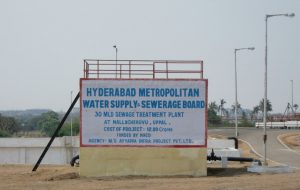
News
Camila Merino Franco and Morgan Shultz complete their REU program with the SRN
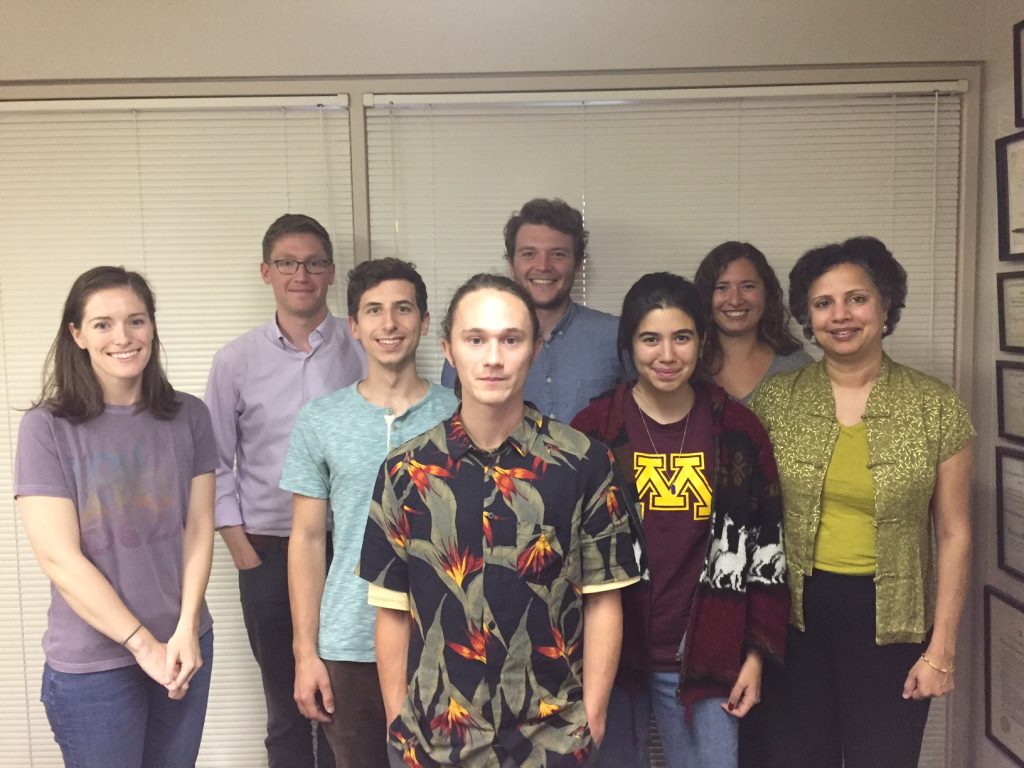
This summer, the Sustainable Healthy Cities network at the University of Minnesota hosted two undergraduate students through the Research Experience for Undergraduates (REU) program. Maria Camila Merino Franco (University of Minnesota, Twin Cities) and Morgan Shultz (Salish Kootenai College, Pablo, MT) worked alongside SRN researchers at the University of Minnesota, in collaboration with the University of Michigan, to map urban agriculture practices in St. Paul, Minnesota. This project mapped various types of urban agriculture through a combined method of GoogleEarth digitizing and field searches. The objective of the work was to assess the current level of urban agriculture in St. Paul and variation across neighborhoods with differing socio-demographic characteristics. “Having Camila and Morgan on board served several goals of our SRN, not only providing useful data and analysis, but giving us additional perspectives and insights about how to move the project forward. In addition, they were terrific people to work with, and we hope the experience will be valuable to them as they continue to develop and pursue their future careers!” said Frank Douma, coordinator of the network’s participation within the REU program.
Camila is a student at the University of Minnesota Twin Cities studying Biosystems and Bioproducts Engineering with an emphasis in Ecological and Environmental Engineering. Morgan is completing his first year at Salish Kootenai College, a Tribal college in Montana, where he majors in Hydrology. The purpose of the REU program on Sustainable Land and Water Resources is to introduce undergraduate students to key elements of research on land and water resources that are essential to improving management practices, with a focus on Community-Based Participatory Research (CBPR) and diverse interdisciplinary research teams.
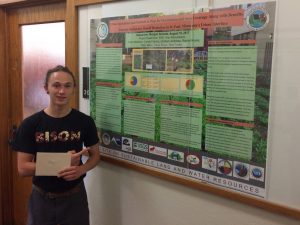
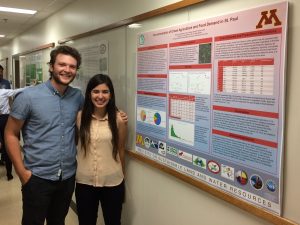
News
Successful NSF-RCN Workshop on Interdisciplinary Urban Sustainability Careers
The NSF-RCN workshop on interdisciplinary urban sustainability careers was held at the Humphrey School of Public Affairs, University of Minnesota, from Aug 7 to Aug 9, 2017. This is a student-led workshop, organized by PhD students Kangkang (KK) Tong from the University of Minnesota and Kate Wassel from Florida State University. They invited 15 professors and professionals with doctoral degrees to share their experience in interdisciplinary collaboration, career development in academia and industries/governmental sectors/NGOs, as well as how to begin their own businesses. These invited speakers came from different educational backgrounds, generally covering engineering, natural sciences, and public affairs. To maximally integrate the needs of career development from various educational degrees, KK and Kate also invited PhD students, Jueyu (Olivia) Wang (Urban Planning), Raj M. Lal (Civil and Environmental Engineering), and Daniel Costie (Public Policy) to form a student committee.
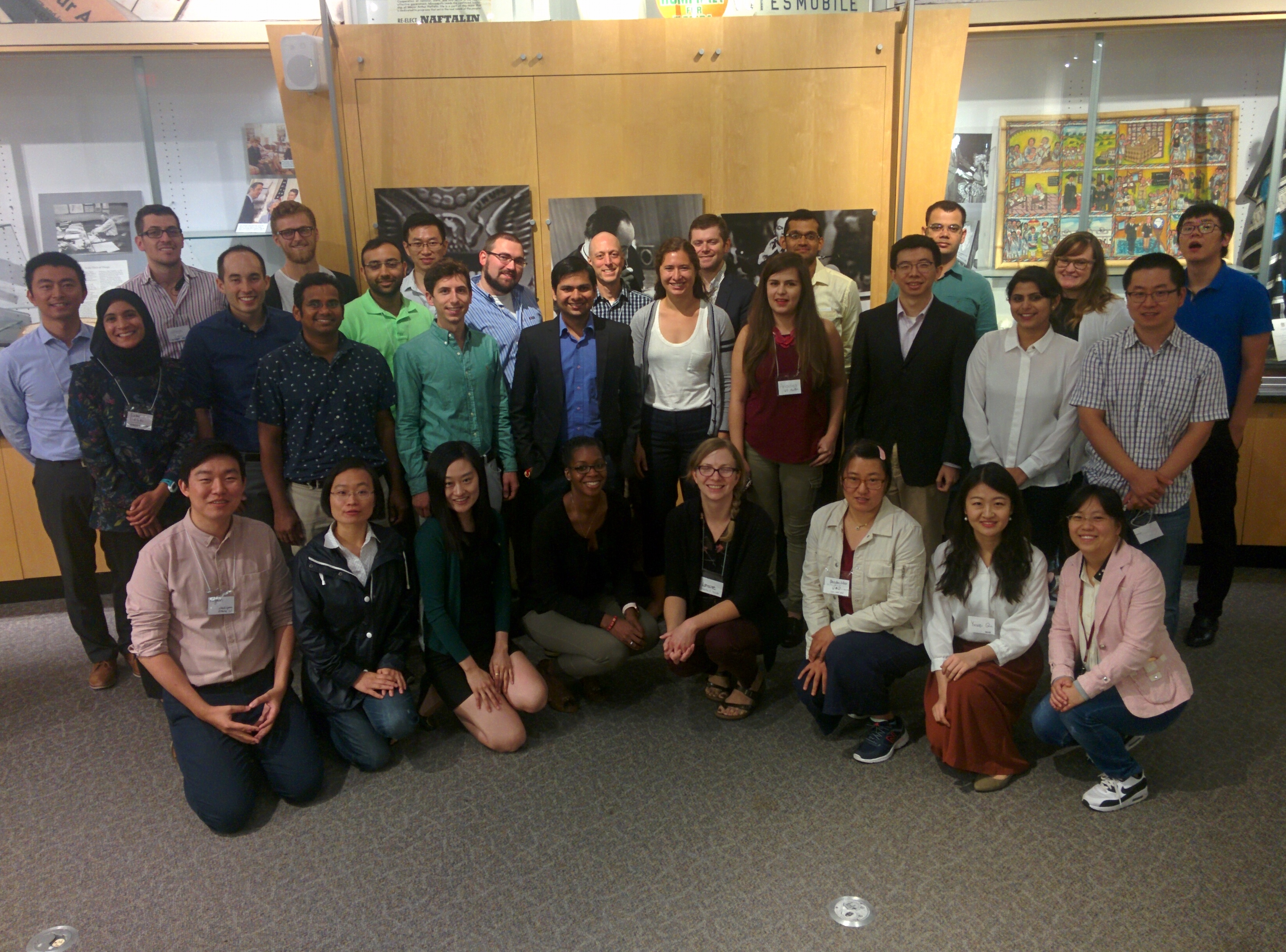
In total, 31 students and post-docs, from 18 domestic and international universities/institutes, participated in this workshop. These attendees are from various educational degree programs, including civil and environmental engineering, environmental science, geography, public affairs, urban affairs, and urban planning, etc. The Center for Science, Technology, and Environmental Policy at the Humphrey School hosted this event.
News
SRN Researchers Lead UNEP Workshop on Resource Efficient Urbanization at ASEAN 3rd Annual Mayors Forum
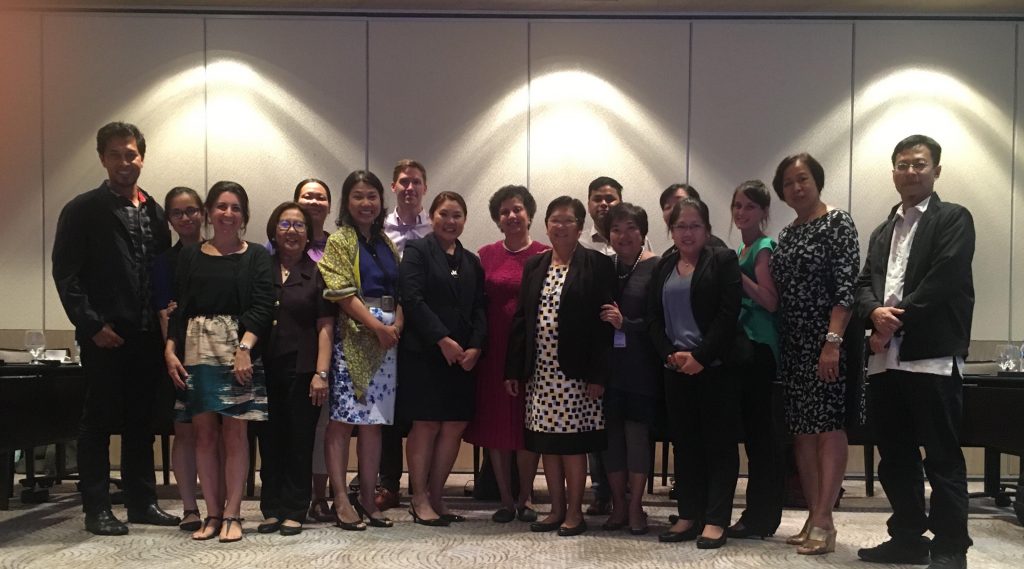
SRN PI, Professor Anu Ramaswami, alongside staff research associates, Sam Tabory and Ashly (Spevacek) McFarlane, of the Humphrey School of Public Affairs’ Center for Science, Technology and Environmental Policy presented at a technical workshop in conjunction with the United Nations Environment Programme (UNEP) at the Association of Southeast Asian Nations’ (ASEAN) 3rd Annual Mayors Forum in the Philippines, July 24-27. Professor Ramaswami also addressed the larger Forum audience as an invited plenary speaker.
The technical workshop was co-hosted by UNEP, United Cities and Local Governments Asia-Pacific, and the League of Cities Philippines. Participants included elected officials, technical staff, and representatives of regional local government associations.
At the workshop, the research team presented strategies for resource-efficient urbanization and the development of compact, livable cities in Southeast Asia. The team also conducted interviews with mayors and urban development experts from Southeast Asian cities to better understand differences in local sustainability decision-making across the region.
Workshop participants engaged with critical regional urbanization dynamics including the projected growth of small and medium size cities in Southeast Asia. While mega-cities like Jakarta and Manila often monopolize the attention of sustainable development observers, much of the urban population growth that is projected to occur in Southeast Asia between now and 2050 will be in cities with fewer than 500,000 residents.
A key barrier to resource efficient urbanization both in Southeast Asia, and elsewhere, is a lack of coordinated planning across policy areas as well as different levels of government. Workshop participants identified the need to better link policy-making and planning processes across key sectors like economic development, housing, and transportation. Similarly, participants discussed the need for more collaboration and resource sharing both vertically and horizontally across government agencies at national, regional, and local levels.
ASEAN city officials at the Mayors Forum highlighted many examples of ongoing resource-efficient urbanization efforts across the transportation sector, building design, and renewable energy production. However, the workshop highlighted the challenges of best practice sharing across government agencies and local ASEAN governments. National and international resources for city officials, technical staff and other key personnel are available, however, the information is not always distributed effectively to the local level.
Energy, water-use, demographic, lifestyle and other key metrics that can inform city officials about where they are succeeding and where they might need to improve with respect to resource-efficient urbanization are not collected in most ASEAN cities. The benefits associated with collecting these metrics is not always apparent to city officials, and data collection efforts of this type often require resource investments of both money and staff time, both of which are often constrained in many city governments. The is result is that data collection is often not prioritized by local administrations
The workshop was part of a process to prepare a report written in conjunction with UNEP on urban infrastructure transitions in Southeast Asia. Key findings from the workshop, including barriers to resource-efficient urban development and strategies to address these barriers, will be incorporated in the final report. The report is scheduled for release in late 2017.
The ASEAN Mayors Forum released a video that highlights the discussion during the two day event. It can be viewed here.
News
Annual progress report presented at SRN Awardees Conference
The Sustainable Healthy Cities SRN traveled to Arlington, Virginia in early June for the SRN Awardees Conference. Our cooperative agreement with the National Science Foundation includes an annual presentation of progress and information. PI’s Trish Culligan and Ted Russell along with staff and faculty, Robert Johns, Nisha Botchwey, Rick Feiock, Yingling Fan, Ashly Spevacek, Olivia Schares, Sarah French, Dana Boyer, and Sudy Majd represented our SRN and connected with NSF staff and the other Sustainability Research Networks (SRNs).
Each SRN gave an introduction to their project and presented their progress and experiences in the following topics:
Education and Workforce Development
Forming and Managing Interdisciplinary Research Teams
Trajectories of SRN Science and Engineering
Challenges in Urban Sustainability Research: Views from Social, Economic and Behavioral Scientists
Data Collection and Model Integration
Engaging Key Stakeholders around SRN Research
There was a poster session featuring early career researchers and their work. Sudy Majd from Columbia University and Dana Boyer from the University of Minnesota represented projects from our SRN.
Fellow SRNs:
SCRiM (Sustainable Climate Risk Management)
AirWaterGas
UWIN (Urban Water Innovation Network)
UREx (Urban Resilience to Extremes)
